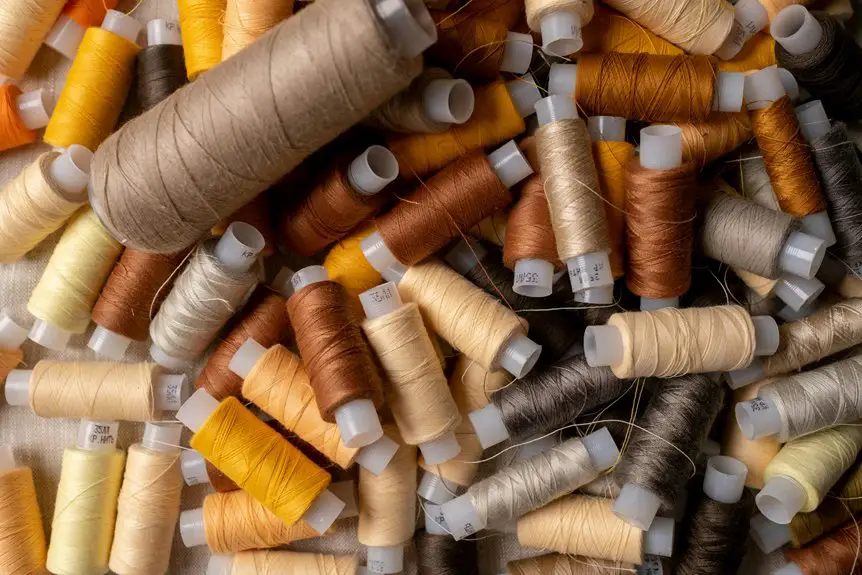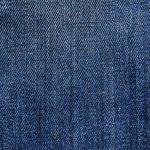You might find polyamide better if you need durability, abrasion resistance, and low moisture absorption for activewear or industrial uses. Nylon, being a type of polyamide, offers excellent strength and flexibility, often at lower cost and with more recycling options. Both have environmental trade-offs, with nylon’s production being more energy-intensive. Your choice depends on performance needs, budget, and sustainability goals. Explore the details behind these differences to make the best decision.
Table of Contents
Key Takeaways
- Polyamide offers better abrasion resistance and lower moisture absorption compared to nylon, enhancing durability and comfort in activewear.
- Nylon typically has higher tensile strength and flexibility due to its crystalline structure, making it ideal for industrial and apparel uses.
- Nylon production is more energy-intensive and environmentally impactful than some bio-based polyamides with lower carbon footprints.
- Polyamide can be more costly and less widely recycled than nylon, affecting overall sustainability and budget considerations.
- Choosing between them depends on specific project needs, balancing performance, environmental impact, availability, and cost.
Understanding Polyamide: Definition and Characteristics
Polyamide refers to a group of synthetic polymers known for their strength and durability. When you choose polyamide, you’re selecting a material that resists abrasion, chemicals, and heat, making it ideal for various applications.
You’ll find it in textiles, automotive parts, and industrial equipment because it balances toughness with flexibility. Polyamide fibers absorb moisture, which enhances comfort in clothing but requires attention in wet conditions to maintain performance.
Its ability to withstand wear and tear means your products last longer without losing shape or function. Understanding these characteristics helps you appreciate why polyamide is a popular choice in manufacturing, especially when you need a reliable, resilient material that performs well under stress.
What Is Nylon and How Does It Relate to Polyamide?
Nylon is a type of synthetic polymer that you’ll often hear mentioned alongside polyamide because, in fact, nylon is a subset of the broader polyamide family.
Nylon is a synthetic polymer and a specific subset within the broader polyamide family.
When you hear “polyamide,” it refers to a group of polymers that contain amide linkages in their backbone, and nylon fits right into this category.
Fundamentally, all nylons are polyamides, but not all polyamides are nylons. Nylon was the first commercially successful synthetic polyamide, developed in the 1930s, and it quickly became popular for its strength and versatility.
So, when you’re comparing nylon with polyamide, you’re really comparing a specific kind of polyamide to the whole family.
Understanding this relationship helps you see why nylon shares many properties with polyamides yet has unique features tailored to certain uses.
Comparing the Chemical Structure of Polyamide and Nylon
Although they belong to the same family, you’ll find key differences in the chemical structures of nylon and other polyamides that influence their properties and applications.
Both are made from repeating units linked by amide bonds, but nylon typically refers to specific types like Nylon 6 or Nylon 6,6, each with distinct monomers. Other polyamides might use different monomer combinations, affecting their chain length and crystallinity.
When comparing their chemical structures, consider:
- Monomer types: Nylon 6,6 uses hexamethylene diamine and adipic acid, while others may use varied diamines or diacids.
- Chain arrangement: The regularity and symmetry in nylon contribute to its crystallinity.
- Molecular weight: Differences here affect melting points and flexibility.
Understanding these details helps you choose the right material for your needs.
Durability and Strength: Polyamide vs. Nylon
When choosing materials for projects that demand toughness, you’ll want to contemplate how each performs under stress and wear.
Both polyamide and nylon offer impressive durability, but they’ve subtle differences. Nylon, a type of polyamide, is known for its excellent tensile strength, making it resistant to stretching and tearing.
Polyamide fabrics, depending on their specific formulation, can be engineered for enhanced abrasion resistance and flexibility. If your project requires materials that endure repeated mechanical stress without weakening, nylon often stands out.
However, certain polyamide variants may provide better impact resistance or elasticity. Ultimately, your choice depends on the specific requirements of your application, but you can trust both materials to deliver long-lasting strength and durability when used appropriately.
Moisture Absorption and Breathability in Polyamide and Nylon
Beyond strength and durability, how a material handles moisture plays a big role in its overall performance.
When you choose between polyamide and nylon, understanding their moisture absorption and breathability helps you pick the right fabric for your needs.
Polyamide tends to absorb less moisture than nylon, keeping you drier during physical activities. Nylon, on the other hand, can trap more moisture, which might affect comfort.
Consider these points:
- Polyamide offers better moisture-wicking properties, making it suitable for activewear.
- Nylon absorbs more water, potentially feeling heavier when wet.
- Both materials provide moderate breathability but polyamide often feels lighter and cooler against your skin.
Knowing this, you can select the fabric that matches your activity level and climate conditions effortlessly.
Applications Where Polyamide Excels
You’ll find polyamide shines when durability is key, especially in textiles that face constant wear and tear.
It also performs exceptionally well in engineering applications, handling stress and heat better than many alternatives.
Let’s explore where these strengths make polyamide the top choice.
Durability in Textiles
Although both polyamide and nylon are known for their strength, polyamide often outperforms nylon in durability, especially in demanding textile applications.
When you choose polyamide fabrics, you benefit from enhanced resistance to wear, abrasion, and environmental factors. This means your textiles last longer and maintain their integrity even under stress.
You’ll find polyamide excels particularly in:
- Outdoor gear, where exposure to rough conditions requires tough materials
- Sportswear, benefiting from repeated stretching and washing
- Industrial fabrics, which face constant friction and heavy use
Performance in Engineering
Building on polyamide’s proven durability in textiles, its performance in engineering applications truly stands out.
When you need materials that combine strength, flexibility, and resistance to wear, polyamide delivers. It excels in automotive parts, like gears and bearings, where it withstands friction and heat.
You’ll also find it in electrical components because it resists electrical insulation breakdown while maintaining structural integrity.
If you work with machinery or tools, polyamide’s impact resistance and low friction reduce maintenance and extend lifespan. Plus, its ability to absorb vibrations helps improve performance in dynamic environments.
Choosing polyamide means you get reliable, long-lasting components that handle demanding conditions better than many alternatives.
Common Uses of Nylon in Industry and Fashion
Nylon plays an essential role in both industry and fashion, thanks to its strength, flexibility, and durability. When you use nylon, you’re relying on a material that handles wear and tear exceptionally well, making it perfect for various applications.
In industry, nylon is prized for its resistance to abrasion and chemicals. In fashion, it provides comfort and resilience in garments and accessories.
Here are some common uses you’ll find nylon in:
- Industrial applications: Gears, bearings, and conveyor belts due to its mechanical strength.
- Apparel: Activewear, hosiery, and swimwear because of its elasticity and moisture-wicking properties.
- Accessories: Bags, backpacks, and parachutes where toughness and lightweight matter most.
Nylon’s versatility makes it a go-to material for many everyday products you interact with.
Environmental Impact and Sustainability of Polyamide and Nylon
You’ll want to contemplate the carbon footprint tied to producing both polyamide and nylon.
Think about how each material breaks down—or doesn’t—and what that means for waste.
Plus, recycling options can make a big difference in their overall sustainability.
Production Carbon Footprint
Although both polyamide and nylon share similar chemical structures, their production processes differ enough to impact their carbon footprints considerably.
When you choose between them, understanding these differences helps you make a more eco-conscious decision. Nylon production often relies on energy-intensive processes that emit higher greenhouse gases.
Polyamide manufacturing, depending on the type, can vary in energy use but generally shows potential for lower emissions with newer technologies.
Here’s what you should consider:
- Nylon’s traditional production involves significant fossil fuel consumption, increasing its carbon footprint.
- Bio-based polyamides use renewable resources, reducing overall carbon emissions.
- Advances in polyamide synthesis aim to minimize energy use and waste during production.
Biodegradability and Recycling
Understanding the production carbon footprint sets the stage for evaluating how polyamide and nylon behave after use, especially when it comes to biodegradability and recycling.
Both materials are synthetic polymers, making them resistant to natural degradation. This means you can’t rely on either to break down quickly in the environment, which poses challenges for waste management.
However, recycling options differ. Nylon is increasingly recycled into new fibers and products, reducing landfill waste and resource consumption. Polyamide recycling exists but is less widespread, limiting its environmental benefits.
If you aim to minimize environmental impact, choosing recycled nylon products or supporting recycling programs helps.
Ultimately, neither polyamide nor nylon is fully biodegradable, so focusing on recycling practices and extending product life is key to sustainability.
Cost Considerations When Choosing Between Polyamide and Nylon
How much you spend on materials can greatly impact your project’s overall budget.
When choosing between polyamide and nylon, keeping an eye on cost is essential. Nylon is typically less expensive due to its widespread production and availability. Polyamide, while sometimes pricier, offers specific performance benefits that might justify the cost for your project.
Consider these cost-related factors:
- Bulk pricing: Nylon often comes cheaper in large quantities.
- Processing costs: Polyamide may require specialized handling, increasing expenses.
- Long-term value: Polyamide’s durability can reduce replacement or repair costs.
Factors to Consider When Selecting Polyamide or Nylon for Your Project
When choosing between polyamide and nylon, you’ll want to weigh several key factors that affect performance and suitability. Consider the environment, mechanical demands, and cost implications to make the best choice for your project. Here’s a quick comparison:
| Factor | Polyamide | Nylon |
|---|---|---|
| Moisture Absorption | Higher (can affect strength) | Lower (more stable in wet conditions) |
| Durability | Good abrasion resistance | Excellent toughness and resilience |
| Temperature Range | Moderate heat resistance | Higher heat tolerance |
| Cost | Generally less expensive | Typically costs more |
Frequently Asked Questions
Can Polyamide or Nylon Cause Skin Allergies?
You might experience skin allergies from polyamide or nylon if you’re sensitive, as both can cause irritation. However, reactions are rare. It’s best to test small areas or choose hypoallergenic fabrics to avoid discomfort.
How Do Polyamide and Nylon Fabrics Feel to the Touch?
Touching polyamide and nylon feels like a gentle breeze—smooth, soft, and slightly silky against your skin. You’ll find both comfortable, with nylon often a bit firmer, while polyamide tends to feel more flexible and breathable.
Are Polyamide and Nylon Safe for Food Packaging?
You can trust polyamide and nylon for food packaging since both are widely used and approved for safety. They offer good barrier properties and durability, keeping food fresh without leaching harmful substances into your products.
Which Fabric Is Easier to Dye, Polyamide or Nylon?
You’ll find polyamide easier to dye because it absorbs color more readily than nylon. Its chemical structure allows vibrant, even shades, so if you want bright, consistent colors, polyamide’s the better choice for dyeing.
How Do Polyamide and Nylon Perform in Extreme Temperatures?
You’ll find that polyamide and nylon both handle extreme temperatures with some limits—they resist cold but soften under heat. So, if you’re facing harsh conditions, you’ll want to check specific blends and treatments carefully.
- The Use of Nonwovens in Construction and Civil Engineering - July 11, 2025
- The Use of Nonwovens in Construction and Civil Engineering - July 11, 2025
- The Use of Nonwovens in Construction and Civil Engineering - July 11, 2025







